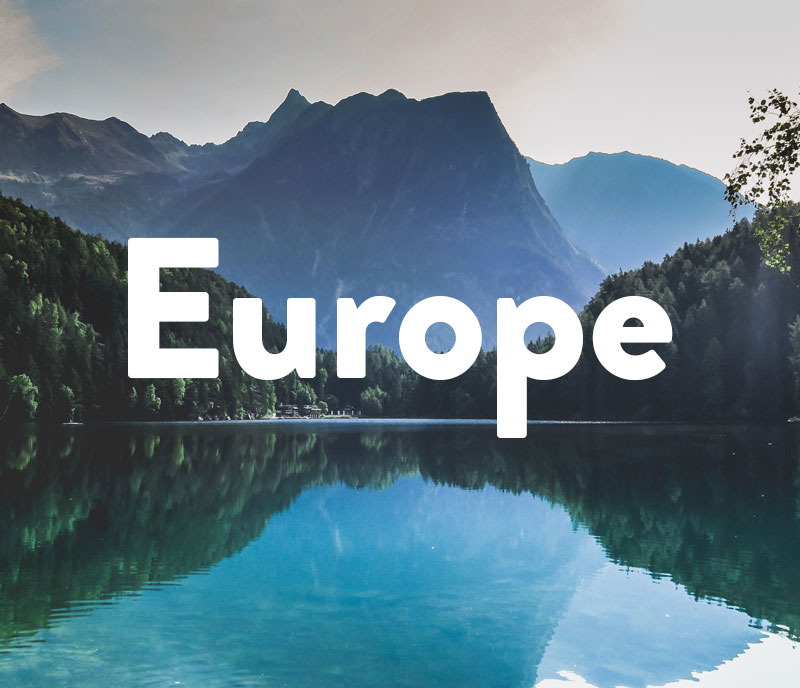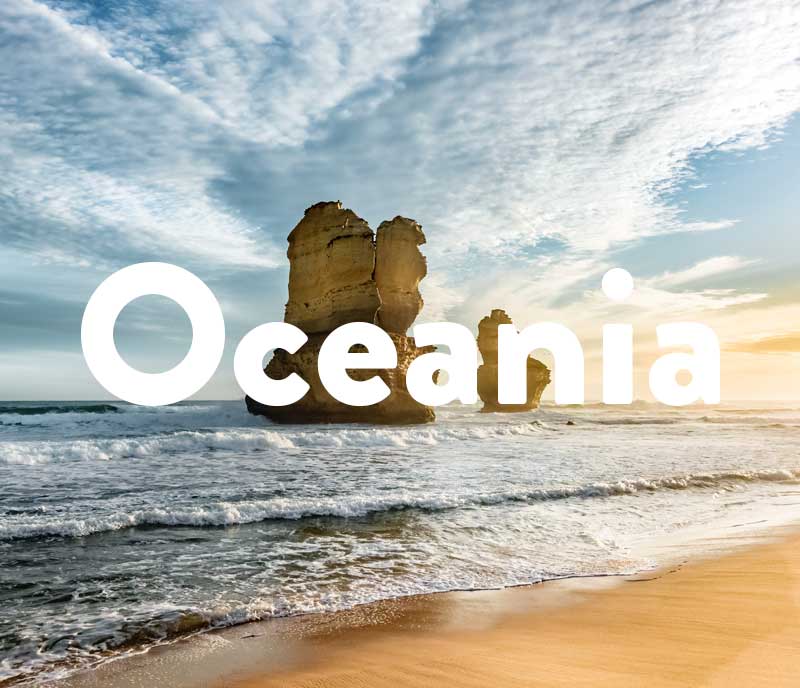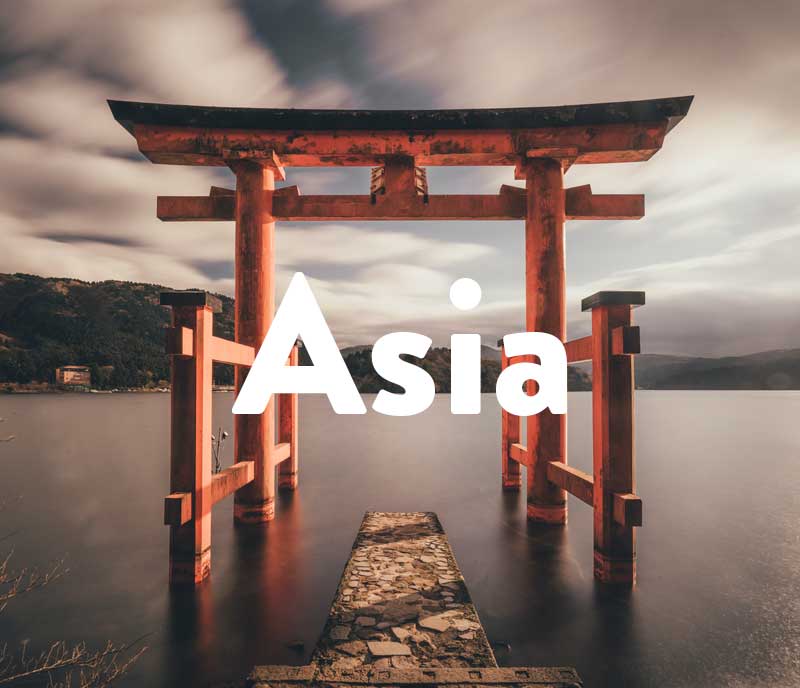Paraguay is a hidden gem within South America. It offers off the beaten path experiences to any traveler. World Heritage Sites, natural wonders, rainforests, arid terrains, a lot of wildlife and an interesting history. Last but not least, Paraguayans are, hands down, the warmest and most welcoming of all of South America.
Stick around and discover Paraguay, your next holiday destination!
Dive into our (free) travel guides below!
.
.
.
.
.
.
.
.
The Key Info
Paraguay is ranked as the 8th largest country in the continent and it is located inland, making it a landlocked country. It’s neighbors are: Bolivia to the north, Brazil to the east, and Argentina to the south and east.
Paraguay’s capital and largest city is Asuncion and its metropolitan area is home to over 3 million people in its 807 km².
Spanish and the most popular indigenous language, Guarani, are both official languages in this country.
Nature-wise, Paraguay is divided in two by the Paraguay River. The Oriental region, where 93% of the population lives, receives abundant water from the rains and rivers, and the Occidental region is home to the Chaco, a semi-arid region that has a unique weather and hosts the second largest forest in South America, El Gran Chaco (that spans to Argentina, Bolivia and Brazil.
Paraguay in numbers
- Population: 7,152,703 million inhabitants
- Total size of the country: 406 752 km²
- Capital city: Asuncion
- Currency: Guarani (PYG)
- Languages: Spanish and Guarani
- Religion: Roman Catholic (87%), Protestants (9%), non-religious and others (4%)
The 5 largest cities in Paraguay
The largest cities in Paraguay are Asunción, Ciudad del Este, Encarnación, Caaguazu and Pedro Juan Caballero.
# 1 Asuncion
Asuncion is the capital of Paraguay. It has a population of over half a million people and it is located on the western part of the country, right on the border with Argentina.
Founded in 1537 by the Spanish, Asunción was once one of the most powerful colonial strongholds on the whole continent. Today it’s a modern, welcoming capital city, with a handful of original 17th century buildings around Plaza de los Heroes and Manzana de la Rivera, great restaurants and revealing historical sites like Casa de la Independencia and Palacio de los Lopez. As for museums, you can’t miss Museo del Barro, an immersive museum packed with ancient art. In the balmy evenings, head down to the bay for a breezy riverside walk.
For a taste of the authentic Paraguay, check out Mercado Municipal Cuatro. This sprawling market is crowded with stalls selling fruit, vegetables, meat, clothing and anything else you can think of. Be careful of valuables though.
Asunción is a great place from where to visit all the surrounding attractions, such as Aregua, Mbatovi or Salto Cristal.
# 2 Ciudad del Este
Ciudad del Este is home to 300,000 inhabitants and is located on the eastern part of the country. This area is known as the triple frontier, for the borders of Paraguay, Brazil and Argentina meet on this place.
Ciudad del Este is the third largest free-trade zone on Earth, so this city is a famous shopping spot for Paraguayans, Brazilians and Argentinians alike.
It does not offer much in terms of architecture, but it has many tourist attractions around it: Itaipu Dam, the second largest on Earth, Saltos del Monday, an impressive set of waterfalls or the famous natural wonder of Iguazu waterfalls are some of them.
# 3 Encarnación
Encarnación is located on the south of Paraguay, next to the border with Argentina, and is inhabited by almost 140,000 people.
Encarnación is Paraguay’s prettiest city. Locals flock to its fabulous waterfront, graced with a pleasant beach and flanked with cheap and cheerful bars and restaurants. But during summer is where this city comes to life. Carnaval is the biggest draw, pulling in visitors from across the country and beyond for street parties from early January to late February.
# 4 Caaguazu
Caaguazu is a city located in the center of Paraguay and it is home to 125,000 people.
In Caaguazu tourists can just explore the city and wander around its quiet and picturesque streets, spend a day refreshing in Parque Ecológico Techapyrã that has natural pools and bungalows for spending the night.
But what makes this location interesting is its location in the center of the country, from which you can access many amazing touristic locations, like Cerro Akati, a mountain with amazing views, Cerro Tres Kandú, the tallest mountain in Paraguay with a whopping 842 meters, or Independencia, one of the many German settlements in the country, where you can enjoy the biggest Octoberfest in the country and the mysterious petroglyphs of Ita Letra.
# 5 Pedro Juan Caballero
Pedro Juan Caballero is home to 120,000 people and is located in the north of the Oriental region. It is infamous for being one of the main drug smuggling spots in the country.
The city itself has very little interest, but what’s interesting about it is its surroundings, specially Cerro Cora National Park, because it is one of the country’s best ecotourism destinations. It also has a great historical significance as the once stage for Francisco Solano López’s final battle during the Triple Alliance War.
TOP Tourist Attractions
# 1 Jesuit Ruins
The World Heritage Sites, Not of La Santísima Trinidad de Paraná and Jesús de Tavarangue, are some of the Jesuit mission archeological zones of the country. The missions are reminders of the Christianization of the indigenous populations of South America during the Spanish colonial era.
La Santísima Trinidad de Paraná is the most complete. It has a Plaza Mayor (central square) with a main church and a school, as well as workshops. The nearby mission of Jesús de Tavarangue moved in 1760 to its current location, but remained unfinished as the Jesuit were expelled of the country in 1768. It would have been one of the largest churches at the time.
# 2 Gran Chaco
The Gran Chaco is the second largest untouched forest in South America and it swallows up the western half of Paraguay and extends into Argentina and Bolivia. It is vast and isolated and the wilderness is speckled with dense forest and scorching plains in turns. Some of Paraguay’s most intriguing wildlife lives here: pumas, tapirs, anteaters, over 500 species of tropical birds, and even jaguars. If you’re brave enough, pitch up a tent in one of the nature reserves, or seek out Guyra Paraguay for guided birdwatching tours and conservation projects.
# 3 Saltos del Monday
Located near Ciudad del Este, the Monday Falls are one of the natural wonders of Paraguay. These 40-meter-tall falls feed the Monday River. They are breathtaking, but perhaps suffer from their proximity to the neighboring Iguazu, less than 40 kilometers away. The Monday Municipal Park preserves the natural forest around the falls, offering viewpoints, a system of trails and a restaurant.
# 4 Pantanal
The Pantanal is the largest wetland on Earth and covers parts of Brazil, Bolivia and Paraguay. Here you’ll find swamp-loving creatures like caimans, boa constrictors, capybaras and otters. This place is the definition of an off the beaten path destination and that makes it really hard to get there. By land it’s a long way (over a day from Asuncion) through dirt roads until you reach Bahia Negra. From there, tourists need to take a boat to get to the only accommodations available inside the Pantanal: Tres Gigantes biological station. Although if you are a slow traveler, you can take a boat from Asunción or Concepcion which ends up at Bahia Negra 5 days later. Yeah. But a pro tip is to take a plane there. There is only one per week, and it is a military plane and it costs just around $50, so it is a great deal. It doesn’t get more isolated than that.
# 5 Parque Nacional Ybycuí
Ybycuí is Paraguay’s most visited national park. It’s an exotic stretch of the Upper Paraná Atlantic Forest, home to the howler and capuchin monkeys, peccary, coatí and tropical birds. Entry is only around $8 USD per vehicle, which includes a visit to the iron foundry (the first one on the continent). It doesn’t get better than spending an afternoon chilling and swimming in one of the pools beneath the park’s many waterfalls (Salto Mbocaruzu).
Best time to travel
Paraguay is accessible year-round. There are only two seasons: hot, and extremely hot. December to February experiences peak heat. Rainfall is evenly distributed through the year, although it tends to rain slightly more between March and November.
Since the country’s travel industry is starting to grow, there are not any particularly busy periods.
Holidays in Paraguay
- January 1: New Year
- March 4: Heroes’ Day
- March- April movable: Holly Week
- May 1: Labor Day
- May 14 and 15: Independence Day
- June 17: Chaco Armistice
- August 15: Founding of Asuncion
- September 29: Boqueron Battle Victory Day
- December 8: Virgin of Caacupé Day
- December 25: Christmas Day
Do I Need a Visa?
Europeans Union citizens do not need a visa to enter the country for touristic reasons.
US citizens must pay on arrival for their visas, and you can check here if your country needs a visa or not to enter Paraguay:
Paraguayan Currency
Paraguayan currency is called Guarani. Banknotes are available at 2,000, 5,000, 10,000, 20,000, 50,000 and 100,000 Guarani, and coins at 50, 100, 500 and 1 000 Guaranies.
Money / Credit Cards: Credit cards are common in the main cities, so there should be no problem paying with them. Although when travelling outside of major cities, it is a good idea to pack enough cash.
Dos and Don’ts in Paraguay
Brazil, as any other country has its rules and practices that you need to know when travelling there to avoid feeling uncomfortable or even being disrespectful.
| Do | Don’t |
| Ask Paraguayans about their country and history. They will be thrilled to tell you all about it, and it’s a great ice-breaker. | Say no. Paraguayans, for some reason don’t like that word and is considered rude. Use “Gracias” instead. |
| Drink and share Tereré, Paraguay national drink. It is made with yerba mate, but served with cold water. You will love it after a hot and sweaty walk. | Stress out. Paraguayans, when asked how they are doing, will always answer “Tranquilo” (chilling); that goes to show how laid back the country is. |
| Ask for directions more than once. Paraguayans are not the best at this and most of the time they are not very clear. | Flush toilet paper down the toilet; the sewage system can’t handle it. |
| Engage with the locals. It has been a forgotten country for ages. So if you show interest in them, they will reward you with one of the greatest and most honest hospitalities on Earth. | |
| Learn a few words in Guarani, locals will flip and they will engage with you much more. |
Must-Haves for Your Paraguay Packing List!
Peru diversity makes it difficult to design the perfect backpack setup, but here are some essentials:
- Rainwear or waterproof clothing.
- Hiking boots and socks to explore the interior of the country.
- Tons of mosquito repellent.
- The standard voltage in Paraguay is 220 V and the standard frequency is 50 Hz. Power plugs and sockets are of type C.
Secret tips from bloggers worldwide
- Winter time in the country comes with flowering Lapachos, a massive tree endemic to Paraguay. It is mind-blowing seeing 30-meter-high trees covered in white, yellow and pink flowers. – Explore Parts Unknown
- Reserva de Mbaracayu: The largest Atlantic forest reserve in the country.
- Ypehu: It is known as the region of the 25 waterfalls.
TOP Instagrammable Places in Paraguay
- #saltocristal (5k posts)
- #lomasanjeronimo (1k posts)
- #aregua (29k posts)
- #ypacarai (5k posts)
- #itaipubinacional (27k posts)
Fun Facts About Paraguay
Did you know…?
One of the most tragic wars that took place in South America was the War of the Triple Alliance. Brazil, Argentina and Uruguay fought agains Paraguay and, after 5 years of war, half of the male population in Paraguay had died during the war between 1864 and 1870.
Paraguay receives 99.9% of its electricity from hydroelectric plants with 75% of that coming from the Itaipu Dam in Ciudad del Este.
Not done reading?
- Dresden and Saxon Switzerland – The perfect weekend trip
- Vacation in Carinthia: Experience the sunny side of the Austrian Alps
- Craft Unforgettable Postcards: Say Goodbye to Writer’s Block with AI (Coming soon!)
- Discovering the Charm of San Antonio: 5 Hidden Must-Visit Places
- Off to a Texas adventure: Our trip to San Antonio, Fredericksburg and Bandera – Part 2







